When personal injury lawyers take on cases involving large truck crashes and commercial trucking accidents, they often encounter unique opportunities and challenges. Commercial trucking accidents offer the potential for substantial settlement value (due to the severity of injuries and the involvement of well-insured defendants). That being said, they also require detailed investigation, tight legal framing, and a deep understanding of how to prove negligence under heightened standards. To succeed, skilled attorneys must approach each case with a mix of technical precision and practical leverage.
Commercial vehicle litigation involves unique issues that demand a litigation approach that goes above and beyond the standard auto injury approach. Keeping in mind that commercial drivers must meet specific licensing requirements, that their employers have additional regulatory duties, and that there are specific requirements linked to equipment failure, employee scheduling, training gaps, and load imbalances, there are complex factual matrices that an attorney handling commercial trucking accidents will have to consider.
On top of these foundational complexities, corporate defendants bring with them high public stakes, business reputations, and teams of sophisticated defense lawyers ready to fight hard against large payouts.
Curious about how to approach and develop an initial framework for litigating commercial trucking accidents? Keep reading to learn more.
The Unique Profile of Trucking Accident Litigation
Accidents involving large commercial vehicles, such as semi trucks, are among the most serious on the road. A collision with a semi-truck or delivery van can cause catastrophic harm, often resulting in long-term disability or death. This raises the potential value of the case significantly compared to a standard passenger vehicle crash.
But high value doesn’t guarantee a favorable result. Trucking defendants are often backed by commercial insurance policies, risk management teams, and legal counsel with experience in suppressing exposure. They don’t just fight on legal grounds. They fight with smart delays, document requests, and procedural defenses intended to wear down your patience and law firm resources. Winning these cases requires the ability to construct a thorough and credible narrative early.
Establishing Duty and Breach Under Commercial Standards
In many cases (though not all), commercial drivers are required to hold a commercial driver’s license (CDL) and adhere to strict standards of conduct. These standards are particularly stringent for drivers operating on interstate routes, where federal regulations dictate safe operation and compliance. Their obligations exceed those of everyday motorists. For example, they are expected to perform vehicle inspections, maintain detailed logbooks, and comply with federal hours rules.
Any deviation from these standards can form the foundation of a negligence claim. Attorneys should examine not only the accident report but also maintenance records, employment logs, and GPS data. If the driver skipped required rest periods or failed to inspect their brakes, these are not just oversights — they are breaches of duty under both federal law and industry norms.
In many cases, proving the breach involves retaining experts who understand Department of Transportation (DOT) regulations and can interpret whether the driver or employer failed to meet a professional standard of care.
Pursuing Vicarious Liability Against Employers
Most commercial trucking cases involve a business defendant — the company that employed or contracted the driver. This opens the door to employer liability through doctrines like respondeat superior, which holds companies accountable for negligent acts committed during the course of employment.
Drivers must also be authorized by their employers to carry out specific tasks, and any deviation from these authorizations can lead to legal complications.
But it’s also worth exploring direct claims against the company for negligent hiring, training, supervision, or retention. Did they run background checks? Were red flags ignored during the interview process? Was the driver qualified to handle the type of cargo they were hauling?
When companies are shown to have institutional weaknesses, legal exposure increases. Even if the driver was clearly at-fault, highlighting failures at the corporate level gives your claim added weight and supports a larger damages demand.
Identifying All Liable Parties
Trucking accidents often involve a web of responsible actors. Beyond the driver and their employer, liability can extend to:
- Third-party logistics firms that managed scheduling
- Maintenance shops that failed to service the truck properly
- Warehouse staff who overloaded or imbalanced cargo
- Manufacturers who produced defective components
Additionally, the condition and maintenance of the trailer can be a significant factor in determining liability.
A careful investigation into the truck’s maintenance history and cargo manifest may reveal unexpected contributors to the crash. Bringing additional defendants into the lawsuit not only increases the pool of insurance coverage, but also creates pressure for early resolution as parties attempt to avoid prolonged exposure.
Gathering Evidence That Moves the Needle
A strong liability case begins with preserving key evidence. This includes:
- Dashcam footage from the truck and any other involved vehicles
- Electronic logging device records, which track hours and locations
- Black box data, which records speed, brake usage, and engine metrics
- Dispatch communications between the driver and employer
- Police reports and first responder observations
Thorough investigations must be conducted to gather all relevant evidence and build a strong case.
Act quickly to issue spoliation letters to preserve data before it’s deleted. Work with accident reconstruction specialists who can review the scene and vehicle damage to establish how the crash occurred and whether evasive actions were taken.
In complex cases, visual storytelling through diagrams or animated reconstructions can help juries understand how a technical failure or driver error caused the collision.
Dealing with the Possibility of a Defense Based on Partial Fault
Defense attorneys in trucking cases may argue that the plaintiff ignored an obvious hazard, especially if weather or road signage played a role. This tactic attempts to reduce the defendant’s share of liability by blaming the injured party for failing to avoid a known risk.
Distraction, such as using a mobile device while driving, can also be a significant factor in determining fault.
Attorneys should be prepared to counter this by highlighting:
- Limited reaction time due to truck size or speed
- Obstructed views caused by the vehicle’s blind spots
- Inadequate warnings from the truck operator
- Violations of traffic laws or operational standards
Comparative fault may apply, but the burden is on the defense to prove it. A well-framed argument around industry expectations can minimize the plaintiff’s share of fault and preserve the full value of the claim.
Using Regulatory Violations to Reinforce Negligence
Trucking is one of the most heavily regulated sectors in transportation. The Federal Motor Carrier Safety Administration (FMCSA) sets out detailed rules covering driver behavior, vehicle maintenance, and hours of service.
Driving long hours without adequate rest is a common regulatory violation that significantly increases the risk of accidents. Violations of these rules can serve as compelling evidence of negligence. Courts may treat them as proof of a breached duty of care. Common regulatory missteps include:
- Exceeding allowable driving hours without rest
- Failing to conduct pre-trip inspections
- Operating vehicles with known safety defects
Documented violations lend credibility to your client’s version of events and place additional settlement pressure on the defense. Attorneys should consider requesting compliance audits during discovery and referencing public FMCSA safety scores for the company involved.
Calculating Damages With Precision
To maximize a settlement, you must document and support the full range of losses. Commercial trucking accidents tend to result in serious injuries, so damages often include:
- Past and future medical expenses
- Rehabilitation and therapy costs
- Lost income and diminished future earning capacity
- Property damage
- Pain and suffering
- Loss of consortium or companionship
Injured victims often face significant medical expenses and long-term rehabilitation costs.
Economic damages should be supported with pay stubs, tax returns, and medical invoices. Non-economic losses benefit from detailed narratives and testimony describing how the client’s life has changed — from mobility limitations to emotional trauma.
Use vocational experts and medical providers to connect the injuries directly to the crash, and to forecast long-term impairments that might not be immediately apparent.
Framing the Case for Settlement Leverage
Most commercial vehicle cases will settle before trial, but the settlement amount depends heavily on how convincingly you present risk to the defendant. To push negotiations forward, emphasize:
- The strength of liability evidence
- The potential for reputational harm if the case goes public
- The documented severity of the injuries
- The likelihood of a sympathetic jury
- The cost of prolonged litigation
The potential for fatal truck crashes adds significant weight to the case and increases the pressure on defendants to settle.
If the trucking company faces other pending claims, suggest that early resolution might limit future exposure. Defendants often settle not just because they expect to lose, but because they can’t afford the collateral damage of prolonged litigation.
Bear in mind that commercial trucking companies want to avoid the possibility of having their reputation smeared through litigation. Instability or uncertainty regarding the commercial trucking company’s safety processes could cause them to lose business. Don’t be afraid to lean in on the pressure that you can exert here.
Trial Readiness as a Pressure Tool
Even when you hope to settle, preparing your case as if it will go to trial improves outcomes. Defense counsel tracks whether plaintiff firms are serious about courtroom proceedings. When they sense weakness or hesitation, offers stay low.
Firms that effectively represent their clients in court often receive more favorable settlement offers. Firms with a reputation for trial preparedness often receive more favorable offers early. Be meticulous with your filings, request depositions promptly, and show that your team has the resources and commitment to take the case through verdict if necessary.
This credibility at the negotiation table creates real value for your client.
Contingency Fees and Risk-Sharing With the Client
Clients injured in trucking accidents are often unable to work and face large medical bills. They are unlikely to afford an hourly billing arrangement. Contingency representation aligns your interests with theirs. You both win if the case settles favorably.
Starting the legal process with a clear understanding of contingency fees helps align the interests of the client and the attorney.
From your firm’s perspective, these cases justify the investment of time and resources because of the higher policy limits and damages potential. Proper vetting on the front end ensures that your caseload consists of viable, high-return claims.
Contact Walker Advertising to Learn More About How We Can Help Your Firm Grow
If you’re a personal injury lawyer looking to grow your client base — we can help. Here at Walker Advertising, we operate legal networks under various English and Spanish brands (1-800-THE-LAW2, Los Defensores, and more) to connect plaintiffs with qualified local attorneys.
Our office is dedicated to connecting plaintiffs with qualified local attorneys. We understand that promoting your firm can be a challenge in today’s rapidly changing legal marketing environment. To that end, we’ve built a multi-pronged acquisition platform for gathering and qualifying leads — you don’t have to worry about pushing your services online or in-person. Instead, you can simply sign up to our network for a specific claim “type” and you’ll receive qualified leads of that type on a regular basis.
That way, you can focus on doing the important work of advocating for your clients and securing compensation on their behalf. We’ll handle the administrative headache of getting you the leads you need for your firm to prosper and grow.
Contact us today to get started with one of our associates.






